Keys to NCAA Tournament Success
Evaluating Increased Scoring & Identifying Keys to NCAA Tournament Success
With conference tournaments continuing and the postseason tournaments upon us including the big dance NCAA tournament, the astute handicapper, bettor and fan can better position themselves for success in betting games at the sportsbooks or tournament pools by knowing the strengths and weaknesses of both conferences and teams.
Here are some thoughts and key considerations in handicapping college basketball and tournament play. While there have been changes in the college game over the years, the fundamentals of college basketball remain the same when evaluating the teams and match-ups. I have relied on these fundamentals in many of my game analysis while using statistical profiles, scheduling, late season situations and match-up 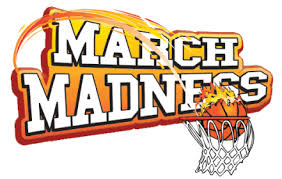 analysis. During the NCAA Tournament, there is no home court advantage, but sharp bettors will understand the emotional situations, letdown and home court advantage for the National Invitational Tournament (NIT).
analysis. During the NCAA Tournament, there is no home court advantage, but sharp bettors will understand the emotional situations, letdown and home court advantage for the National Invitational Tournament (NIT).
The NCAA wanted more scoring in college basketball following near record-low scoring at the end of the 2013 season in which Division 1 basketball saw scoring drop to 67.7 points per game; the lowest since the 1981-82 season. Field-goal accuracy had dipped to 43.3 percent, the lowest level since 1964-65. And 3-point shooting of 33.9 percent was the lowest since the rule was instituted in 1986-87.
The rule changes including shot clock reduction to 30 seconds created just that, although not necessarily for the better of the game. The 30 second shot clock and less clutching and grabbing allowed for more free flowing play with the stronger and more athletic teams gaining an ever greater advantage.
To give you an idea on scoring increase, here are the number of teams that have averaged at least 81 points per game in recent seasons.
2014-15 – 2 teams
2015-16 – 17 teams
2016-17 – 26 teams
2017-18 – 42 teams
As scoring and possessions continue to rise with rules changes and reduction of shot clock in recent seasons, the NCAA has apparently accomplished its goal of increased scoring.
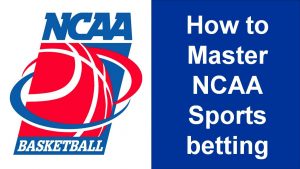 Keeping an eye on the upcoming NCAA Tournament with Selection Sunday on March 11, 2018, the following teams in the top 20 (5 seeds or better) in the latest Bracketology projections that are scoring at least 81 points per game are:
Keeping an eye on the upcoming NCAA Tournament with Selection Sunday on March 11, 2018, the following teams in the top 20 (5 seeds or better) in the latest Bracketology projections that are scoring at least 81 points per game are:
Villanova (87.2), Duke (85.1), Gonzaga (84.7), Xavier (84.5), Auburn (84), Wichita State (83.1), North Carolina (83), Kansas (81.5), Arizona (81.1), Purdue (81.1) and Michigan State (81).
Also of note are other NCAA Tournament teams: Oklahoma (86), Nevada (83.5), Arkansas (82) and West Virginia (81).
It’s worth noting that 23 of the last 27 NCAA Tournament champions have been either a #1 or #2 seed. Since 1997, the eventual national champion has been seeded no lower than #3 in every year except 2014 when UCONN pulled the shocker as a #7 seed.
So the elite-level teams with the strongest statistical profiles often win the NCAA Tournament, and the best teams with fairly specific statistical parameters get to the Elite Eight and beyond.
Still, in the elimination format of the NCAA Tournament and any postseason game, one poor stretch of play or a scoring drought can quickly end a team’s season. Likewise, a team that gets hot from the 3-point arch can ride that momentum to a victory. When handicapping a contest, the biggest statistical discrepancy can come in 3-point shooting, yet it is often the hardest to predict. Evaluating how a team and players will perform under pressure in an elimination format can be a challenge. The difficulty for many handicappers and bettors is 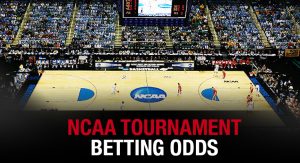 breaking down the match-ups with less familiar teams. Evaluating the statistical information, interpreting the data and analyzing how teams and players will perform when facing a different level of class opponent often keeps bettors away from unknown teams. That’s where the intangibles of coaching, leadership, experience, team chemistry, injuries and riding momentum plays a part. And of course the great equalizer in terms of betting on the college basketball tournaments and the madness during March is the point spread.
breaking down the match-ups with less familiar teams. Evaluating the statistical information, interpreting the data and analyzing how teams and players will perform when facing a different level of class opponent often keeps bettors away from unknown teams. That’s where the intangibles of coaching, leadership, experience, team chemistry, injuries and riding momentum plays a part. And of course the great equalizer in terms of betting on the college basketball tournaments and the madness during March is the point spread.
The most value in the NCAA Tournament and postseason party lies in the opening week of action, and it’s up to us to determine where the value lies along with the strengths and weaknesses of the teams. The technical side (relevant patterns) of the equation comes in evaluating situations and past performance such as a team’s strength of schedule, performance playing on the road, results and level of play versus quality teams and understanding contrary patterns.
We can discuss quality guard play, interior post presence and rebounding, 3-point and free throw shooting, pace of play and a go-to-guy in any match-up. But in so many contests, and especially competitively-lined games, the team that defends the best, rebounds and takes care of the basketball can often overcome the opponent or their own off-shooting night. And in no sport is coaching more important than in college basketball, and especially in postseason and tournament preparation and in-game play with adjustments. So here are some of the fundamentals to evaluate in upcoming games and postseason play.
Offense: We’ve noted the increased scoring, but with the top teams playing in the NCAA Tournament, many teams are capable on the defensive end of shutting down one scoring option (think Virginia, Cincinnati, Texas Tech). Look for teams with quality point guard play and scoring balance, both from the perimeter and inside with multiple scoring options (Duke, Kansas, Michigan State, Purdue, Gonzaga, 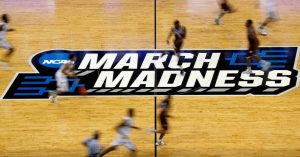 Villanova). Last season North Carolina rode their high-scoring athletic and top-20 efficiency team to a NCAA Tournament title, and it’s apparent in today’s game that you have to be able to score more. Gonzaga was a high-scoring team that ranked top-3 in offensive efficiency last season and played North Carolina in the championship. But recall Villanova, the No. 1 overall seed, ranked No. 1 in points per game and offensive efficiency, yet the defending national champion Wildcats were upset by #8 seed Wisconsin in the round of 32. The Badgers were a top-20 defensive efficiency team. Quality depth can be a factor, but teams will rely on their top players at crunch time. Recognize a team’s assist-to-turnover ratio. The ability to play in the half court with an efficient offense and balanced scoring options will separate teams, especially in the second half as some teams start to wear down. Thus, unselfish teams that value and take care of the basketball and give their teammates good looks will ultimately win out with productive shooting.
Villanova). Last season North Carolina rode their high-scoring athletic and top-20 efficiency team to a NCAA Tournament title, and it’s apparent in today’s game that you have to be able to score more. Gonzaga was a high-scoring team that ranked top-3 in offensive efficiency last season and played North Carolina in the championship. But recall Villanova, the No. 1 overall seed, ranked No. 1 in points per game and offensive efficiency, yet the defending national champion Wildcats were upset by #8 seed Wisconsin in the round of 32. The Badgers were a top-20 defensive efficiency team. Quality depth can be a factor, but teams will rely on their top players at crunch time. Recognize a team’s assist-to-turnover ratio. The ability to play in the half court with an efficient offense and balanced scoring options will separate teams, especially in the second half as some teams start to wear down. Thus, unselfish teams that value and take care of the basketball and give their teammates good looks will ultimately win out with productive shooting.
Defense: While scoring continues to get headlines and highlights, teams that play defense and minimize turnovers and second chance opportunities will win more games. Last season Gonzaga rode one of the nation’s elite defensive efficiency (and high scoring and efficient offense) to the NCAA Tournament finals before losing to North Carolina. The Zags toughest tournament game to that point was in the Sweet Sixteen, a tight defensive battle and narrow 61-58 victory against West Virginia, another top-5 elite defensive efficiency team. South Carolina 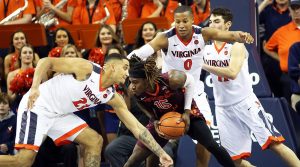 was the surprise tournament team making the Final Four as a #7 seed. The Gamecocks were top-10 in the country in defensive efficiency. All these teams had superior coaching, which so often plays a part in a team’s discipline on defense, and teams that play hard on the defensive end are worth supporting. The type of defense a team plays may vary from game to game with man-to-man, zone or full court pressure. Superior defensive teams and those that have quality athletes and flexibility to adjust are your best bets (think Virginia and coach of the year Tony Bennett, Cincinnati, Michigan State, Texas Tech or West Virginia ‘press’). After a full season of results, the overall body of work and numbers should tell the story. Key stats to analyze are defensive field goal percentage and turnovers forced, with overall points-per-game allowed also of note, especially versus quality teams. I prefer to utilize stats from conference play in the stronger NCAA Tourney Conferences, and look at how teams outside of the top 40 performed against better competition. Look at a team’s offensive tempo, and if a team has an efficient offense and still plays strong defense, you likely have a team worth plenty of support (think Virginia, Texas Tech, Michigan State and Cincinnati – last year I noted North Carolina and Gonzaga who went to the NCAA Tournament championship game).
was the surprise tournament team making the Final Four as a #7 seed. The Gamecocks were top-10 in the country in defensive efficiency. All these teams had superior coaching, which so often plays a part in a team’s discipline on defense, and teams that play hard on the defensive end are worth supporting. The type of defense a team plays may vary from game to game with man-to-man, zone or full court pressure. Superior defensive teams and those that have quality athletes and flexibility to adjust are your best bets (think Virginia and coach of the year Tony Bennett, Cincinnati, Michigan State, Texas Tech or West Virginia ‘press’). After a full season of results, the overall body of work and numbers should tell the story. Key stats to analyze are defensive field goal percentage and turnovers forced, with overall points-per-game allowed also of note, especially versus quality teams. I prefer to utilize stats from conference play in the stronger NCAA Tourney Conferences, and look at how teams outside of the top 40 performed against better competition. Look at a team’s offensive tempo, and if a team has an efficient offense and still plays strong defense, you likely have a team worth plenty of support (think Virginia, Texas Tech, Michigan State and Cincinnati – last year I noted North Carolina and Gonzaga who went to the NCAA Tournament championship game).
Rebounding: One of the most overlooked areas in handicapping is evaluating a team’s ability to rebound the basketball. The key here is rebounding margin, which goes together with a team’s defensive field goal percentage (think Michigan State, Cincinnati, Duke, Gonzaga). Teams that are physical, strong and athletic on the boards also create more fouls on the opponent and get to the free throw line more often. The top teams will always be strong in these areas, and the ability to control the boards and minimize second-chance points will go a long way in determining whether a team advances or not.
Use these thoughts and additional stats including scoring margin as a guide as you dig into the games, and approach each contest as a separate match-up without over-reacting to the most recent result. That will also help you identify potential value in the line with public perception impacting the linemakers decisions as well.
Regardless, all the tournaments and betting action will be robust and sticking with some of these fundamental concepts and ideas should guide you to more layups and hopefully close call winners when wagering at the sports books.
Article posted at osga.com.

 Twitter
Twitter Facebook
Facebook